|
WHY PLIGHT OF INDIANS MUSLIMS IS SO MISERABLE?
WHO IS RESPONSIBLE?
By Atta Rasool Malik
Indian Muslims, approximately 180 millions, in a nation of over one billion are in a bad shape and suffering. Most of them are politically marginalized, economically deprived and socially ridiculed. Indians Muslims believe there is institutionalized discrimination against them by Hindustan. Partition has weakened them and they have been sacrificed for the freedom of north western Muslims of India i.e. Pakistan.
Disparities between Muslims, who make up 13.4% of the population, and India's Hindus, are strikingly sharp in all fields. Generally speaking, Indians Muslims have shorter life spans; worse health, lower literacy levels and lower-paying jobs. Who is responsible for their suffering? Is it creation of Pakistan which has weakened them and brought miseries to them? Is it really an institutionalized effort by Hindustan to put Muslims down the drain? OR Indians Muslims themselves are responsible for their existing plight? With these questions in mind I have focused on Indians Muslims. I believe clear understanding of the issue will help us in arriving to correct conclusions/assessment. If creation of Pakistan is the real cause, and /or there is institutionalized discrimination against Indians Muslims then it is our moral responsibility to own/acknowledge this problem irrespective of the fact, whether or not we can help Indian Muslims at the moment. If the problem lies with Indians Muslims themselves then we may at least identify the weak areas for information of our Muslims brothers and prevent unjust criticism of our great leader Quaid-e-Azam MA Jinnah and creation of Pakistan. On the contrary, if real face of Brahman and his ambitions are causing trouble to all communities of India, including large population of Indians Muslims, in the name of revival of Hindutva (Hindu nationalism and Culture) then it is an ‘internal issue’ of India. The Issue which will never let India to become a great power not evens a civilized one. This is self-destructive mechanism which will ultimately eat up happiness, liberty and communal harmony which is so essential for a diverse society like India.
How old is Hindu Muslim Rift and Rivalry? Is it a new phenomenon or can we find its roots or evidence in the history?
History of Hindu Muslim Rift and Riots
Historically, there is no consensus regarding exact origin of Hindu Muslim enmity in the subcontinent. However, Hindus-Muslims riots have a long history and it doesn’t begin or end with partition of subcontinent. Historian and research scholars though, describe the Indian society as never homogenous yet hardly find any worthwhile tension between these groups in the distant past. To them it all began with establishment of British rule in India. This is also true; one can not divide unless a society is divisible along certain fault lines. These fault lines get further aggravated in certain conditions. In feudal society too, these fault lines exist but do not play politically divisive role as do in colonial or capitalist society. These societies are more competitive. Thus the colonial society sharpened communal consciousness and the British further fueled the separation through political maneuvers. British policy of divide and rule particularly after war of Independence 1857, created non-negotiable gaps between Hindus and Muslims. For Hindus, right of separate electorate for Muslims, encouraged by British, is the seed of division of India [in fact Sir Agha khan 3rd convinced British viceroy Lord Minto in 1906 and later ratified by congress in Lucknow Pact 1916]
To some communal hostilities is interest based game of elites. It is power politics. It is a struggle for power sharing, political and economical division of resources between elites. The medieval politics was a feudal and non competitive. Power was wielded through sword not through ballot. After 19th century, power is being welded through ballot hence masses are used in this struggle for benefit of competing elites on different themes. Since religious differences are more appealing and attractive to masses, so we find increased communal violence.
On the other hand, many historians are of view that relations between Hindus and Muslims were relatively peaceful if not completely harmonious during Middle Ages. However, after the death of Mughal Emperor Aurangzeb in 1707, which is viewed as decline of Muslim era and start of Hindus dominance, violence between Hindus and Muslims has been recorded. Dr Ommar Khalidi, India writes in his book, Indians Muslims since Independence:-
The first reported communal riots took place in Ahmadabad in 1714, centering on holli celebration and cow slaughter. There was Hindu Muslim riots in Kashmir in 1719, in Delhi in 1729, in Bombay in 1786. Early in Benares bloody riots were reported in 1809. The riots have been witnessed in Moradabad (1833), Shahjehanpur (1837) Kanpur and Allahabad in 1837 and 1852 respectively. Apparent cause was cow slaughter and Hindu religious processions playing music in front of mosques during “namaz” prayer. The cow question has been important at least since the middle ages. Emperor Babur explicitly forbad cow slaughter. His grand son Akbar imposed a ban on cow slaughter in the entire empire. In 1847 the British banned cow slaughter in Amritsar. More or less after every few years there were bloody riots. There were riots in Multan 1922, Lahore 1923. Major outbreak took place in 1924. In Allahabad, Calcutta, Delhi, kohat, lucknow to name a few.
However, once independence and partition came near, there was sharp increase in ghostly killing.
Muslims Participation in Politics
Once All India Congress, (there in after congress) established in 1885, Muslim leadership in united India quickly grasped that it was anti-Muslim and pro Hindu. Muslims while struggling primarily through platform of Muslim league (established in 1906) won separate electorate for Muslims from British through Minto-Morley reforms 1909 and got acknowledged from congress as just demand through Lucknow Pact in 1916. This was great political achievement. However, in Nehru report (1928) submitted to British for political reforms in India greatly shocked Muslims. In the report, congress had suggested that separate electorate for Muslims be abolished. Despite Quaid-e-Azam best efforts, Congress did not agree even to minor changes. However, Quaid-e-Azam convinced British, that Muslims political representation can only be ensured through separate electorate. Congress rule of 1937[subsequent to election of 1935] brought further distrust. Congress had started resisting fair Muslim representation at different forums. Days of British in India were numbered due to ever increasing demand of freedom by all communities of India and other great changes at world political scene. Muslims were now debating how best to safeguard Muslims political interests after departure of British? In few provinces Muslims were in majority, in others they were unevenly spread over entire India. Different formulas for sharing political power between Hindus and Muslims were being discussed. Great poet Allama Iqbal suggested an independent Muslim enclave in the north west of India, comprising Punjab (not divided as of today), Sind, Baluchistan and NWFP. This economically viable and contiguous Pakistan was to rediscover spirit of Islam. It was to remain closely connected to Muslims world. It had to be source of inspirations for entire “Ummah” and ultimately free the humanity from ills of communism and capitalism by introducing Islamic political philosophy.
MA Jinnah vision of Pakistan was different. It comprised all Muslims majority provinces and Muslim princely states. It was Indians in focus unlike Iqbal who was appealing Muslims of Afghanistan, Iran and some times all nations of the East. Quaid-e-Azam though advocated discovery of Islamic spirit like Iqbal, yet primarily cared for Muslims of India. Pakistan with Eastern wing comprising Bengal (undivided) and Assam, Western wing, Punjab (undivided), Sind, Baluchistan and Kashmir and in the centre was Muslims princely state of Hyderabad, Junagarh and Manavedar. There was also a peace corridor to connect all these segments. Pakistan was to co-exist with Hindus in complete harmony.
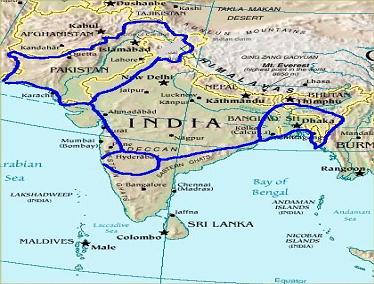
Gandhi, Jawaharlal Nehru and Moulana Abdul Kalam Azad were assuring fair and proper political representation to Muslims in united India. Muslim league didn’t trust Congress in view of her previous experiences. Later, Gandhi agreed to Jinnah’s demand of Pakistan. However, Jinnah had yet to prove that he was sole representative of Muslim of India in coming election of 1945-46, different factions of Muslim league[ National Muslim league of Sir Shafi] and few other Muslim political leaders[Abul Kalam Azad and Ghafar khan] had questioned the leadership of Jinnah. Later, Mohammed Ali Jinnah in a speech at Aligarh Muslim University, urged all Muslims of India, to help their brethren in the Muslim majority areas, achieve independence from the Hindus, even if they themselves would not be so fortunate. Muslims of majority and minority provinces responded wholeheartedly to Jinnah’s call and Muslim league gained landslide victory. Quad-e-Azam MA Jinnah was sole representative of Muslims and now his demand for Pakistan was to be honored as promised by Congress and British.
This was considered grand success of Jinnah and Muslim league and defeat for congress. Later, Pt Nehru and congress earned plum in their caps for handing over truncated and moth-eaten Pakistan.
Pakistan was created but it was neither the dream of Iqbal nor the vision of Jinnah, in fact it was “craftsmanship” of Nehru. Muslim majority provinces or “rebellious provinces” as were often labeled by the Hindu press were to make Pakistan. However, even the members of the British Boundary Commission were astonished over attitude of Congress’s President Mr. Jawaharlal Nehru in the partition issues. Nehru in connivance with Mountbatten ensured that Bengal and Punjab were not annexed to Pakistan as per their existing administrative boundaries as earlier agreed, but were to be divided from “locality to locality” and street to street on the basis of the Muslim and the Hindu population. This move provided a new justification to communal genocide and resulted bloodbath in Punjab and Bengal. History bears witness to the fact that Jinnah had no option, except to agree to such “truncated and moth-eaten” Pakistan, as the Jinnah himself called it later on. Princely states of Hyderabad, Junahgarh and Manavader that opted to join Pakistan were forcefully annexed by India on the pretext of majority of the Hindu population, but all established rules and agreed principles of division were violated on the question of Jammu &Kashmir.
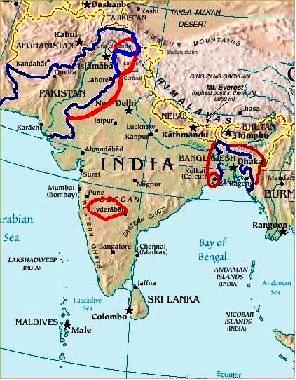
The newly established state, Pakistan did not inherit administrative infrastructure unlike that of Bharat (India). Military and other financial assets were not handed over to Pakistan.
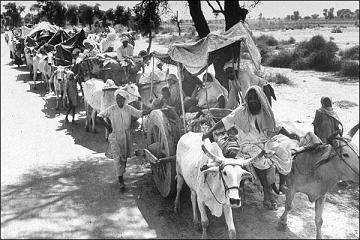
Congress Attitude of twisting and repudiating the terms agreed with Jinnah embarrassed even Gandhi, who went on hunger strike until his death. This protest accrued RS 700 million for Pakistan against all military and cash reserves of the United India. Pakistan faced numerous challenges including a huge flux of refugees' plundered, killed and their women kidnapped. We can imagine this kidnapping from the fact that in rehabilitation program, Bharat (India) returned around 22,000 kidnapped women to Pakistan.
Liaqat-Nehru Pact
In December 1949, fire of communal violence and hate had once again erupted between Hindus and Muslims mainly in India. Muslims were being harassed to flee their areas so that their properties could be confiscated, a common practice during days of partition. This was terrible situation. Then Pakistan leadership which coincidently belonged to the minority provinces of United India was greatly perturbed over such alarming situation.
Free Muslims of Pakistan had also vividly remembered the advise of Quaid-e-Azam regarding Muslims which were left behind in Hindustan. Quaid-e- Azam Muhammad Ali Jinnah while addressing 30th session of All-India Muslim league, held at Dehli, Apr 24, 1943 had said;
Do not forget the minority provinces. It is they who spread the light when there was darkness in the majority provinces. It is they who were the spearheads that the congress wanted to crush with overwhelmingly majority in the Muslim minority provinces. It is they who suffered for you in majority provinces, for your sake, for your benefit, for your advantage. But never mind it is all in the role of minority to suffer. We of the minority have suffered and ready to face consequences if we can liberate 75 millions of our brethren in the north-western and north-eastern zones.
Pakistan demanded India to put immediate end to such violence. Initially, this was not appreciated by India and considered as interference in internal affairs of India but PM Liaqut Ali khan spent six days in perusing Indian leadership to sign a treaty to work out permanent mechanism to resolve this menace.
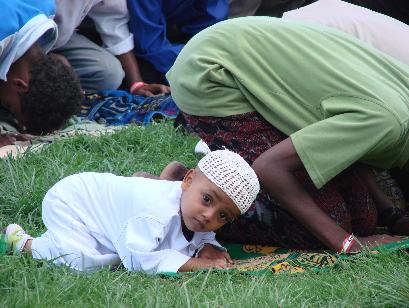
On April 8, 1950, the two leaders signed an historic agreement [a forgotten agreement] which was later given the name; Liaqut-Nehru Pact. This pact provided a bill of rights for the minorities of India and Pakistan. According to the agreement,
the government of India and Pakistan solemnly agreed that each shall ensure, to the minorities throughout its territories, complete equality of citizenship, irrespective of religion; a full sense of security in respect of life, culture, property and personal honor. It also guaranteed the fundamental human rights to the minorities, such as freedom of movement, speech, occupation and worship. The pact also provided for the minorities to Participate in the public life of the country, to hold political or other office and to serve in their countries civil and armed forces.Later, this pact was seen as Pakistan’s advocacy rights for Indians Muslims and was bitterly criticized in lok sabha (Indians parliament).
Indians Muslims as Today
Although there has been some progress in certain Muslim pockets in India but this limited progress is largely independent of state efforts. For its part, the state appears to have deliberately or otherwise played a somewhat indifferent, and in some provinces, clearly hostile attitude to Muslim social, economic and educational advancement. This is suggested for instance, by the fact that Muslim percentage in regular employment, in both the public as well as the private sector has considerably dropped over the decades since 1947. Today, the situation is being made more serious as a result of the impact of ‘globalization’ and neo-liberal economic policies that have hit marginalized groups (such as peasants, workers, landless labourers and artisans, a large proportion of whom are Muslims) the worst.
Some writers have claimed that the socio-economic backwardness of Muslims has surpassed the backwardness of Scheduled Castes. Substantially larger proportion of the Muslim households in urban areas is in the less than Rs.500 expenditure bracket.
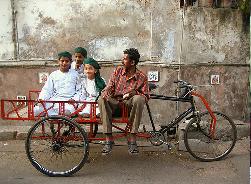
Muslims, who comprise over 13 percent of the population, account for 40 percent of the prison population in India, face gross discrimination in housing, receive less than 5 percent government jobs, hardly any bank loans, suffer from higher rates of illiteracy, and Muslims majority areas are characterized as of inferior infrastructure. In addition, the rise of radical, Hindu movements, such as the Bajrang Dal, RSS and Vishwa Hindu Parishad - each involved in directly or indirectly inciting anti Muslim violence – strokes the flames of religious intolerance and separatism. Muslims are denied political participation through a variety of mechanisms. In famous Sachar Committee’s Report, it was pointed out that many names of Muslims were missing in the voter lists of a number of states, and Muslim concentration constituencies of assemblies and parliament declared as reserved for Schedule Caste persons while constituencies with very low Muslim population but high Scheduled Caste concentration remain unreserved. Hence, it is inferred that Muslims are being systematically denied political participation. Over a period of time Muslims have lost confidence in themselves. Consequently, this huge community has virtually gone leaderless and do not hesitate even in finding refuge in leadership of ‘dalits’ (socially lowest and economically most backward community in India) [Muslims support of Mayawati of the Bahujan Samaj Party, in Uttar Pradesh a case in point]
Actually, a sense of inferiority has gripped the being of the Indian Muslims. Sikhs, a very slim minority having no religious or cultural traditions comparing Muslims, are found to be more confident then Muslims. Actual issue of Indians Muslims is their Islamic identity, unity and ego and not numerical figure. Muslims society is divided on many fault lines including caste system like Hindus. However, the coming generation is different. For example, the Students Islamic Movement of India , an Islamic Student organization, formed in Aligarh, Uttar Pradesh, in April 1977 is a ray of new hope. It reflects Muslim confidence and identity and can bring political benefits in long run.
In short, the Muslims, the largest minority community in the country, are seriously lagging behind in terms of most of the human development indicators.
How Indian Muslims are perceived in India Today?
Ø Hindus believe that Muslims of divided India have no moral and ethical right to stay in this country. In 1940, these people said that they were a different nation and it was not possible for them to live peacefully with the hateful Hindu Kafirs. In 1947 they got their homeland Pakistan but these treacherous and mischievous people did not go to their cherished land but continued to stay in this country as resident non-Indians. Hindus of this country should have kicked them out as soon as Pakistan had been created.
Ø Muslims have divided the country by giving 98 % vote to Muslim league in 1945-46 elections, hence; are responsible for break-up of country.[Figures are grossly wrong. Turn out was 65%, Muslim League won 85% Muslims seats]
Ø Muslims call Hindus as kafir, irrespective of their caste, creed or language. They believe in concept of dar ul islam (Muslim Govt) and dar ul harb (Non Muslim Govt). There exists permanent state of war between these abodes. Muslims are obliged to wage Jihad against darul harb to convert it to darul islam hence they will never make peace with non Muslim countries. Islamic teaching encourages terrorism. There will be no peace unless Muslims abandon or correct Quran.
Ø Muslims do not practice population planning. Hence, are focused to increase their strength. Muslims also resort to convert other communities as Muslim through Tabligh (propagation) to increase their strength. Ever increasing Muslims population is threat to overall demography of India.
Ø Indians Muslims elite and middle class has migrated to Pakistan in 1947 and those left behind are illiterate, low IQ and artisan classes. [View is shared by Muslims and Hindus alike]
Ø Muslims do not join in main stream culture or out look. They try to put on different dress, shalwar kurta, topi and beard for male and Burqa for females. Older people give brown color, hina, to their hair.
Ø Hindus have suffered in the hands of Muslims for over 1200 years.
Ø Muslims ill-treat their women folk. Insist on separate Muslim law board. They do not register their Nikah (marriage contract) and believe in verbal Talaq (divorce) only.
Ø They do not send their children to school rather send them to Madrassah (religious school). Teach their children Urdu and Arabic instead Hindi and Sanskrit.
Ø Muslim institutions and localities abstain from hoisting national flag and singing of national anthem. Because Muslims don’t believe in nation and nationality on geographical basis. Hence they are not loyal. Their loyalty in any future war particularly against Islamic country is doubtful.
Ø Muslims’ Azan, a call for prayer, on loud speakers, five times a day causes a lot of inconvenience to others.
Ø Muslims enjoy slaughter of cows.
Ø Indians Muslims are agent of ISI and work for Pakistan. A famous slogan, in India for Indians Muslims “Babur ki aolad, Pakistan Jao ya Qabristan” O sons of Babar, go to Pakistan or graveyard.
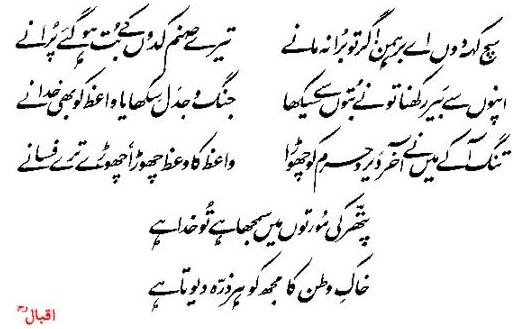
``````````````````````````````````````````````````````````````````````````````````````
Study of above misperceptions indicates that these are grossly generalized, twisted, historically distorted and misconstruction. Few weaknesses which are product of poverty have been labeled as Islamic. Such a poor understanding of Muslims by Barhaman (Hindu religious elite) is ridiculous. Hindus fully understand that Muslims as a minority community do not constitute a homogenous group. They are disposed in small packets over extremely vast area of India. In fact, the community is fragmented on different economic, social, linguistic, ethnic, and regional and now even on caste lines. There are intra-religious differences among the Muslims on one hand, and, intra-regional and intra-cultural, on the other hand. If Muslims were such a homogeneous society reflecting same thought process they would have not been so backward and marginalized today.
Indians Solution of “Muslim problem”
This would be unfair to say that Indian government is indifferent to resolution of issues like communal riots and “Muslim problem” as it is often referred in India. Govt officials, Hindu religious elite, NGOs and other independent scholars debate the issue at different forums. Three broad lines of action to address the issue are clearly visible by simply monitoring the different types of Indians media i.e. print, electronic and internet.
Secularism, Modern Classless Society with Correct Economics Priorities
Ø The Indian Constitution is committed to the equality of citizens and the responsibility of the State to preserve, protect and assure the rights of minorities in matters of language, religion and culture. It is believed by vast majority that solution of communal riots and tensions between different communities lie in promotion of secularism, modern classless society with correct economic priorities for all. It is fact of history that different groups/communities become conscious of their identity due to their ill- treatment in political, social and economic fields. If such concerns are addressed of any group or community, it joins back main stream. It is believed by many that with economic progress, non threatening posture and soft power, even, Pakistan could be reduced to its correct stature, worthy of its size and resources, a dream long cherished by India.
Ø Defeat of Islam (Pakistan and Indians Muslim) through Military Means. Brahmans are at the top in Indians social order for the last 3000 years. Different dynasties emerged in India and were later beaten by different powers, but Brahman retained their status through out, the priestly status higher than kings. They have even subjugated their fellow citizens in the name of Sacred Hindu social order, a division of people in classes and castes for thousand of years. And most surprisingly, all “non- Brahmans” accept them as superior human being. As per Barhaman (Hindu elite), in South Asia, there is only one nation i.e. Indian and there is only one legitimate country that is India. Other states/nations are artificial. Any prosperous and free country in south Asia, even Nepal and Sri Lanka pose great threat to Indian integrity. It is believed that freedom and prosperity of such state is bound to encourage integral states of India to secede from Indian union. Indians want to ensure that freedom is made superficial for all countries of south Asia so that other nations (residing in India) do not consider it worth sacrifices to secede from India. For Indians, two nations theory is great trouble because it argues that another nation based on religion, apart from Indian also exists which is worthy of separate homeland in South Asia. They believe this philosophy even today can fragment India. Therefore, decisive military defeat to Pakistan and its further balkanization is essential for proving this theory wrong which is so essential for survival of India. Military defeat to Pakistan in 1971 war discouraged Indian Muslims to look towards Pakistan for any kind of help. Another decisive blow to Pakistan would “resolve” the issue of Indian Muslims altogether. This approach requires strong build up of Indians armed forces to psychologically paralyze/defeat other nations of South Asia.
Ø Elimination of Muslim Identity in India (Spain Model). Most of Hindus believe that all Muslims residing in united India could have been pushed / forced to flee into Pakistan (East and West) as an ideal solution at the time of partition. But such an effort now is difficult. Therefore, the only viable option available is that identity of Muslims be systematically eliminated. Ethnic, linguistic and caste based communities be organized and states (provinces) could be redrawn if essential to fade religious color. Political constituencies be so drawn that Muslims vote bank is diluted. Data be so collected / maintained that exact figures regarding any religious community is extremely difficult to obtain. Any effort collecting data on religious ground is considered as anti-national. Muslims be divided on caste lines just like Hindus. Muslims are forced to adopt Hindu culture by continuous harassing by police in public places merely on the basis of visible out look, Shalwar kurta or Topi. Wells to do Muslims are being encouraged for inter-marriages between Hindus and Muslims.
In short, only “Hinduized Muslims” are acceptable in India. Communal riots which always result in bigger losses for Muslims have terribly affected Muslim masses. The 2002 carnage in Gujarat, where 2,000 Muslims were killed and their property looted, is the most glaring example of such fascist tactics.
Conclusion
Quaid-e-Azam MA Jinnah, ironically, is highly criticized in India both by Hindus and Indians Muslims alike. To Hindus, he partitioned India, for Muslims he weakened them by dividing the Muslims population. The fact is that Quaid-e-Azam, through out his political career, focused on welfare and protection of rights of Indians Muslims. He as a last resort, after being thoroughly disillusioned by congress worked for independent Pakistan. It is by now very clear that Pakistan is not the cause but product of Hindus-Muslims rift and rivalry. Creation of Pakistan brought lot of benefits to the Muslims of present day Pakistan yet it is also true that Pakistani leadership fell short as expected and hence did not bring any moral or material support to Indians Muslims as visualized and promised by founding father of Pakistan. Prolonged India-Pakistan rivalry has added further miseries to Indians Muslims. Not Quaid-e-Azam and Liaqat Ali khan but later leadership of Pakistan did falter in many fields including forgetting
Liaqat - Nehru pact and not striving for peace with India as advised by great Quaid-e-Azam in view of large number of Muslims there in India.
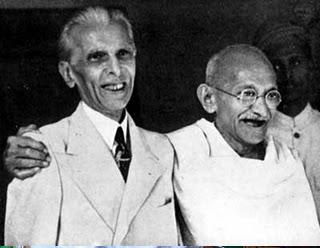
Population of Muslims in India almost equals Pakistan. Hence, division of population because of partition is not the issue; Indians Muslims are still in a great number, 175 millions Muslims. A sense of inferiority has gripped the being of the Indian Muslims. Sikhs, a small minority having no religious, cultural traditions or history comparing Muslims, are found to be more confident and happy then Muslims. Actual issue of Indians Muslims is their Islamic identity, unity and ego and not numerical figure.
Indians Govt (both central and state) attitude towards Muslims is not at all fair. Indians Muslims are invariably being insulted and exploited by the Hindus. Islamic identity and confidence of Indians Muslims is being systematically shattered in an organized manner by state sponsored groups. They are being politically marginalized and economically deprived. Even Muslims student leadership is being executed through fake encounters with police and labeled as Pakistan sponsored an easy blame for Indians Muslims.
Indians, (Brahman Hindus) are continuously building military muscle and simultaneously working for elimination of Muslim identity in India. To them it is national movement of revival of Hindu culture. They are not realizing that one day these ill-treated and marginalized communities will hit them back very hard.
It is time for Indians to draw lessons from previous attitudes driven by ignorance and manipulations of sheer power politics.
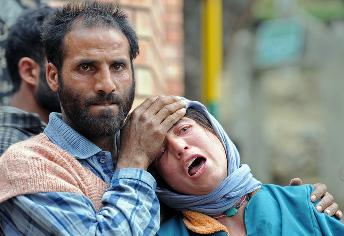
Author is student of M Phil International Relations at National Defence University Islamabad
|